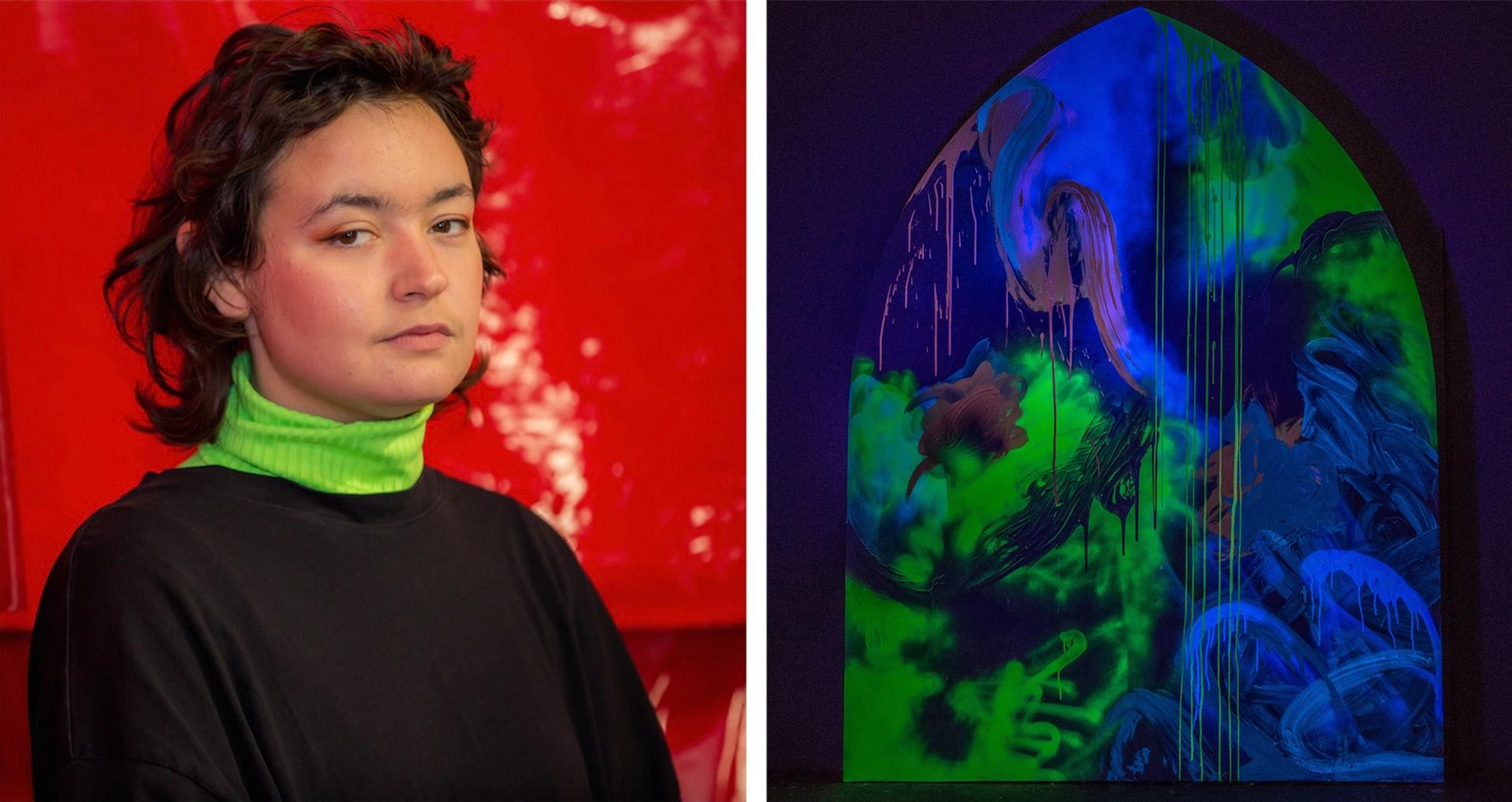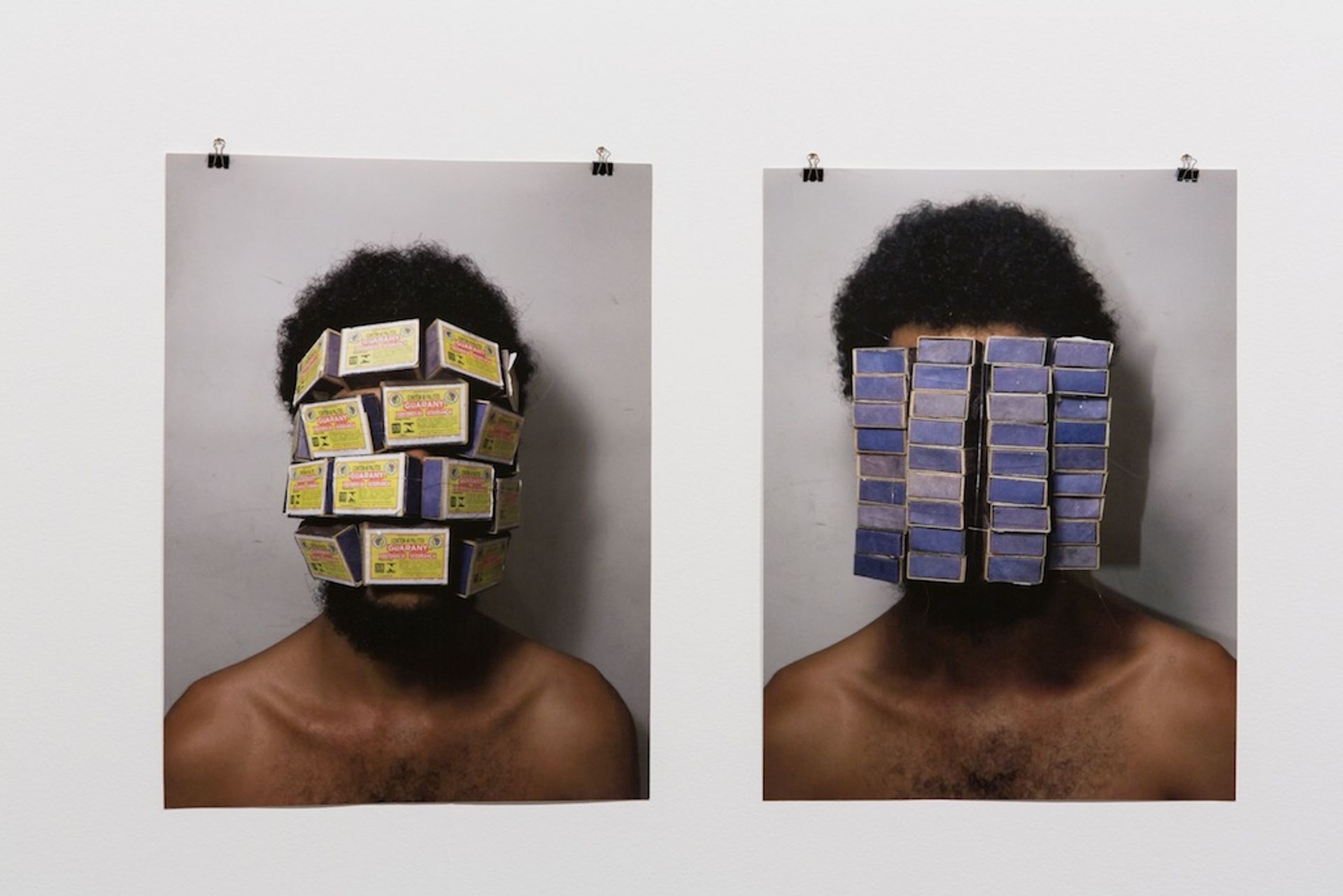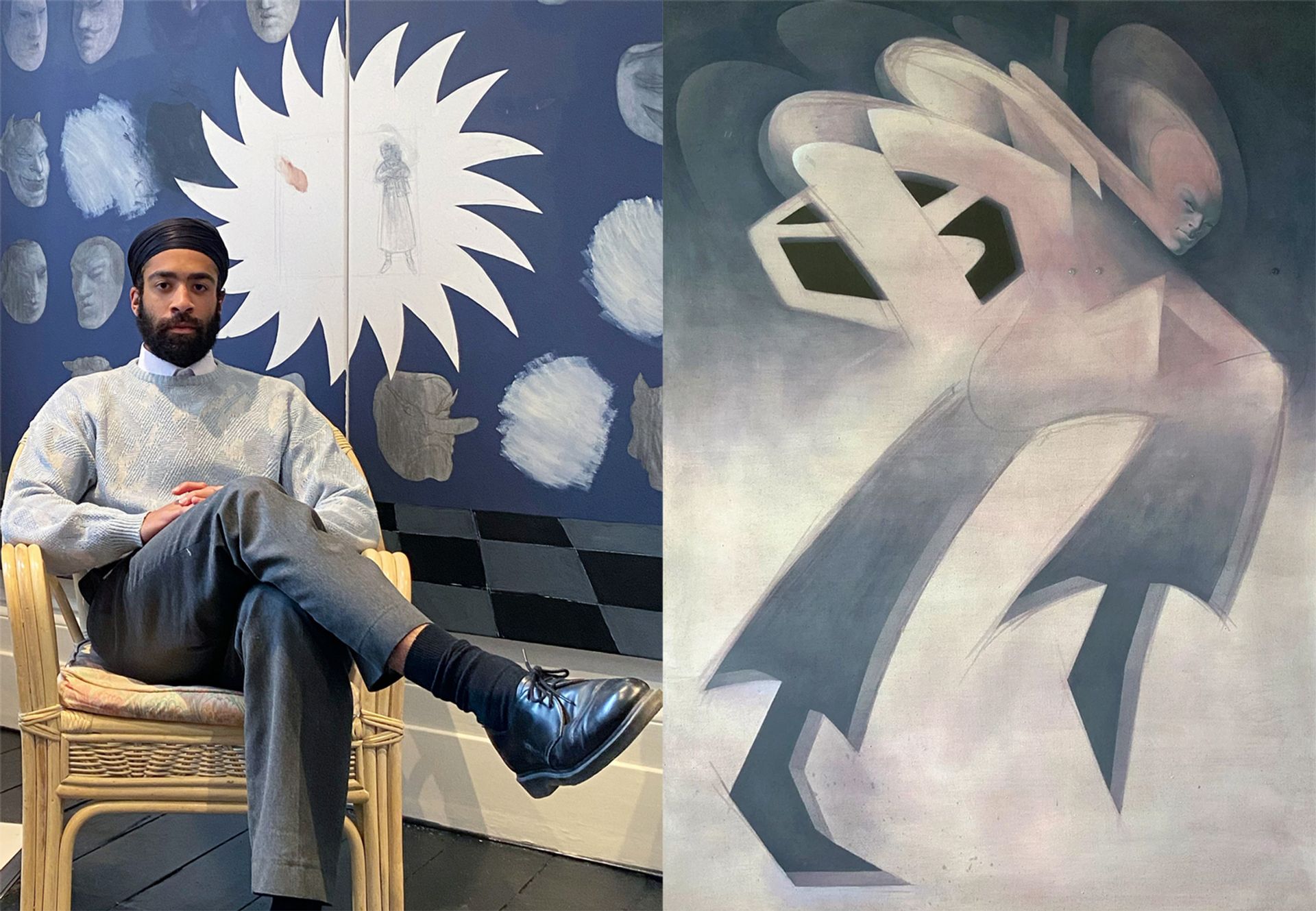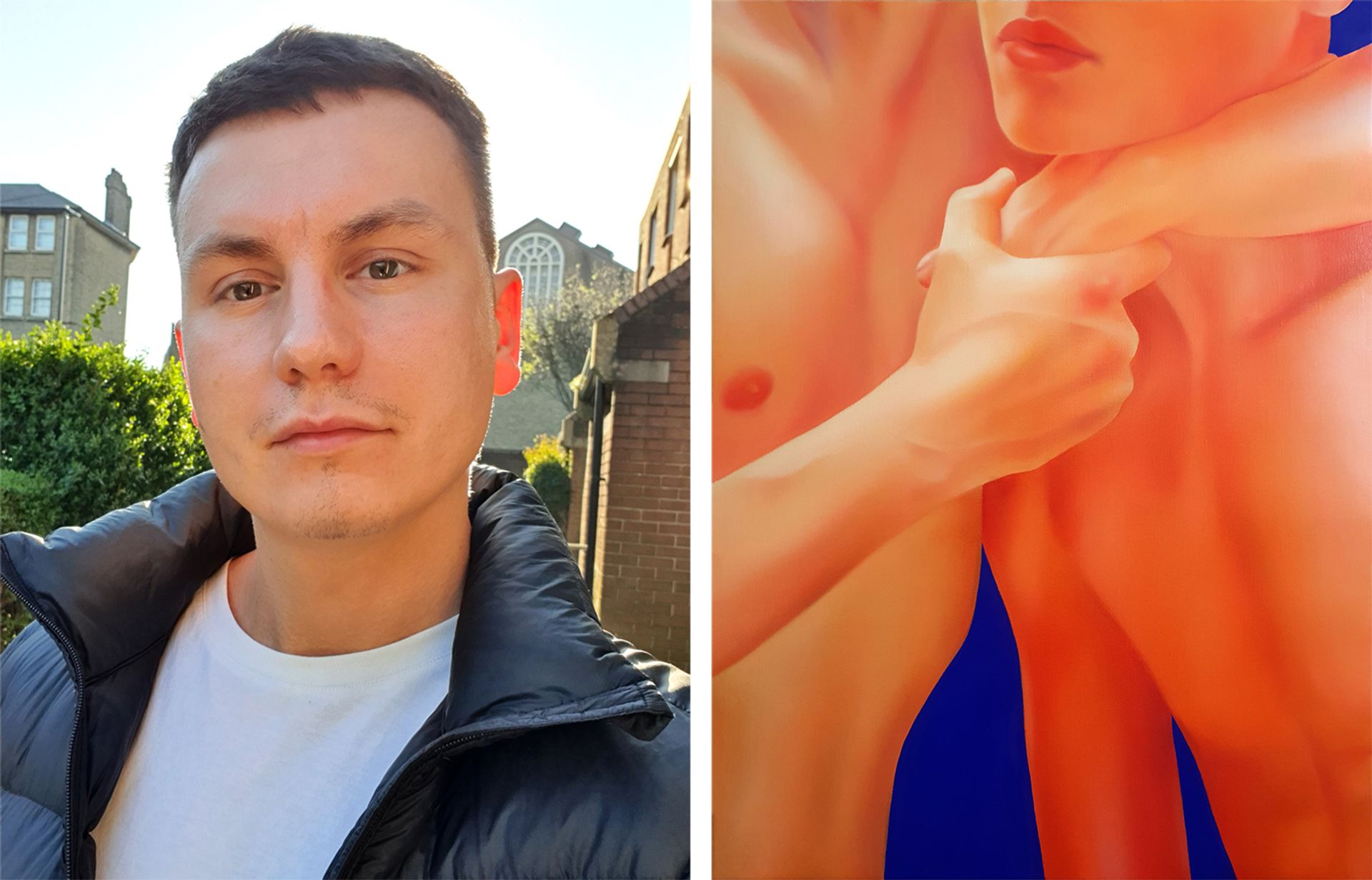Check out The Art Newspaper's guide to London Gallery Weekend for recommendations on the best exhibitions to see during the three-day event, top trends and commentary
Summer in London is fast approaching, bringing forth grass-stained tennis whites, profuse sweating on the Central Line and, of course, a new batch of up-and-coming artists to discover. And with the market for work by under-30s at a fever pitch, there has never been a better time to acquaint yourself with the next cohort of creatives, especially before they turn from emerging to established in the blink of an eye. After all, stars rise fast in the art world and prices even more so. To help you out, we’ve chosen four young(ish) artists showing during London Gallery Weekend who look set to make their mark on the city's scene.

Kate Dunn will show multi-sensory altarpiece paintings at TJ Boulting Courtesy of the artist and TJ Boulting
Kate Dunn: The Tabernacle—Welcome to Pharmakon
Until 3 July, TJ Boulting, 59 Riding House St, W1W 7EG
For those who have grown accustomed to the still of lockdown, Kate Dunn’s rave-inspired multi-sensory painting installation may prove an overwhelming experience. A soundtrack of thumping gabber music (a hardcore genre of distorted electronic dance set to a breakneck tempo), accompanies a series of large-scale canvases shaped like Romanesque altarpieces, on to which Dunn has slapped photo-reactive UV paint in unbridled, gestural brushstrokes. Overhead the lights change according to the manic beat, turning the paintings into pulsating bodies of luminescent streaks reminiscent of strobe visuals found in 1990s nightclubs.
"I wanted to make something intense—a return to the body after a period of numbness," Dunn says. Having trained classically as an artist in Florence, she compares the experience of rave to religious sermons, drawing direct parallels between the convulsing masses of a gospel congregation to those on a darkened dance floor. At 200 BPM, gabber's pace pushes against the limits of the human heart and drives its disciples close to physical breaking point. But through its relentless pulse, a rapturous quality is produced, delivering a sense of unity of which we have been so bereft this past year. After such loss and isolation, it seems vital that our art spaces offer experiences as primal and intensely communal as that of a shared beating heart.

Antonio Tarsis, Cavalo (2015) Courtesy of the artist
Antonio Tarsis: Symbolic Genocide
Until 3 July, Carlos / Ishikawa, Unit 4, 88 Mile End Rd, E1 4UN
Having left school at age 11, the self-taught Brazilian artist Antonio Tarsis spent his youth in the favelas of his home city Salvador collecting scrap objects, painting the city’s walls and developing an experimental streak that has grown into a robust artistic practice. It was also here where he learned first-hand the dangers of being young, Black and poor. "People like me are moulded to occupy places of subalternity,” Tarsis says. “My work helps me discover that my body, predestined to become cheap labour or be killed by the police, could exist in other ways.”
Tarsis's first solo UK gallery show lays bare the social apartheid that structures Brazilian life. At its centre is a series of embroidered textile works depicting the coats of arms of the nation’s public security services that carry symbols of violence and death. Shown alongside is a series of works made from Guarany matchboxes—a traditional brand of matches illustrated with indigenous references, which are commonly found in his neighbourhood. Through his work, Tarsis often regenerates that which is deemed undesirable or useless. In doing so, he invites us to reconsider who and what constitutes the life force of a city, drawing our attention away from the monumental and authoritative and towards the unsung value of life that hides in plain sight.

Christian Quin Newell and The Impermanence of Mental Formations: clinging to notions of power (1/3) (2020) Courtesy of the artist and PUBLIC Gallery
Christian Quin Newell: Earth Altar
Until 3 July, PUBLIC, 91 Middlesex St, E1 7DA
Aliens, ninjas and knights are among a host of mystical and fantasy-based characters inhabiting the paintings of the Italian born, London-raised artist Christian Quin Newell, whose first solo show imagines a dream-like collection of scenes from feudal and present-day Japan and Europe. Touching on themes of karmic retribution and filled with mysterious semiotic marks, they borrow heavily from art historical sources, in particular the palettes and underpainting techniques of the Venetian Renaissance.
Smaller works on wax paper also draw on Newell’s formal study of Indian miniatures, using natural semi-precious pigments such as cinnabar and malachite to render exquisite, vivid colours. Apparent throughout the works is a painstaking attention to process, with underdrawing marks often left visible, emphasising both a reverence and antipathy towards the discipline of painting. Curiously, Newell says that he chooses the scenes he will paint by rolling a dice, and uses the number it lands on to determine which on page in a character studies book he will find a figure to depict.

Christopher Hartmann and Hug (2021) Courtesy of the artist
Christopher Hartmann: In and out of Touch
Until 3 July, Hannah Barry, 4 Holly Grove, SE15 5DF
Christopher Hartmann paints scenes of physical intimacy: two boys lie beside each other on the grass; one man's arm grips around another's neck; clothes sit bunched on a chair suggesting the promise of sex. And yet, it is an atmosphere of unease rather than tenderness that pervades these works, which stand slightly larger than life-sized. Situated in non-places, the figures bear static expressions that never quite match their actions. Hartmann’s compositions, which are typically cropped to claustrophobic effect, feel hostile to the inhabitants of each scene.
"I want these works to hold you at arm's length, to evoke the distance that exists between the figures," says Hartmann, who hopes to capture what he terms as a "cold intimacy", a tone that is at once erotic and alien. This unsettling effect is furthered by an oversaturated colour palette. Skin is painted in synthetic shades of orange, its surface stripped of body hair and disquietingly bloodless, as if digitally smoothed to remove all traces of life. Using an under-layer to replicate the brightness of a computer screen, the works perhaps comment on how modern technology hinders our capacity for emotional connection, though it is hard to tell. Offering little in way of answers, they embody frustrating moments of miscommunication and longing: an uncomfortable silence with a soon-to-be ex lover.
Click here for the full list of galleries taking part in London Gallery Weekend
Check out The Art Newspaper's guide to London Gallery Weekend for recommendations on the best exhibitions to see during the three-day event, top trends and commentary
The Art Newspaper is an official media partner of London Gallery Weekend

